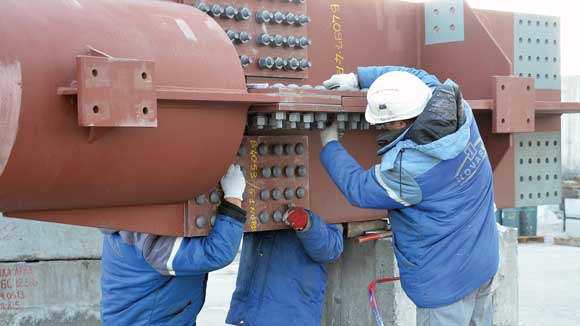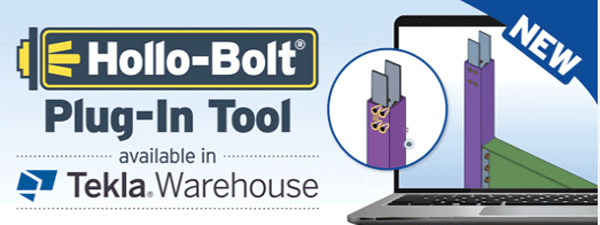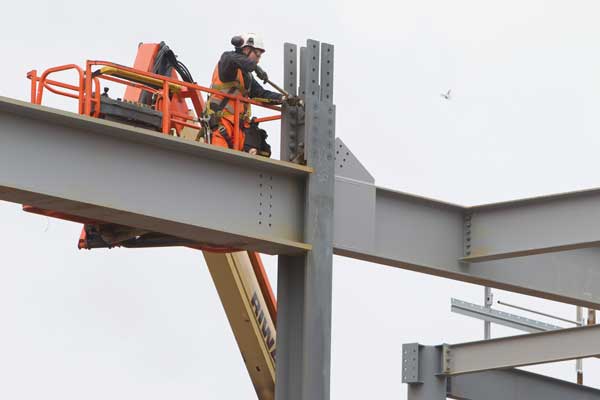Projects and Features
An introduction to preloaded bolting
 NSC reports on bolted connections, and the regulations, standards and current practice for preloaded bolting.
NSC reports on bolted connections, and the regulations, standards and current practice for preloaded bolting.
Bolted connections in structural steel can be separated into two categories. Where a small amount of joint slip has no consequence for the structure, non-preloaded bolting is satisfactory. However, if connections are subject to vibration, load reversal, fatigue or where slip must be avoided, preloaded bolting assemblies should be used.
Standards
Preloaded bolting assemblies are covered by the BS EN 14399 series European standard which comprises 10 parts; of particular note are:
Part 1: General requirements (this is the harmonised or CE Marking standard) Part 2: Suitability test for preloading Part 3: System HR – Hexagon bolt and nut assemblies Part 4: System HV – Hexagon bolt and nut assemblies Part 7: System HR – Countersunk head bolt and nut assemblies Part 9: System HR or HV – Direct tension indicators for bolt and nut assemblies Part 10: System HRC – Bolt and nut assemblies with calibrated preload
Direct Tension Indicators (DTI) are also known as ‘load indicating washers’ and system HRC is the same as Tension Control Bolts (TCBs)
Current practice
Currently only system HR (High Resistance) and HRC (High Resistance Calibrated) assemblies are used in the UK. System HV (Hochfest Vorgespannte Verbindung) assemblies have a short bolt thread and use a thinner nut to obtain ductility by plastic deformation of the threads within the nut. Both HR and HRC assemblies achieve the necessary ductility primarily by plastic deformation of the bolt threads. These systems of bolting are less susceptible to overtightening during preloading. However, if these assemblies are overtightened, the ductile failure mode is by yielding and eventually fracture of the bolt. This type of failure is easily detectable. The use of both HR/HRC and HV systems on the same site should always be avoided because of the risk of confusion and misuse.
System HR assemblies are available in M12 to M36 diameter in property class 8.8 or 10.9, whilst HRC (or TCBs) are available from M12 to M36 in property class 10.9 only. Both HR and HRC are usually supplied in the UK as k-class K0 only (no specific k factor or torque value required).
Countersunk head preloaded bolts are available as system HR and HRC (or TCBs) and are used where a flush finish is essential for functional reasons.
Weathering grade bolting assemblies are not specifically covered in the BS EN 14399 series. The execution standard EN 1090-2 section 5.6.6 gives advice in regard to suitable fasteners, but there is limited availability of such bolting assemblies in the UK. System HR weathering grade assemblies are available in property class 8.8, M24 diameter only. System HRC (or TCBs) are available in property class 10.9, M24 and M30 diameter; availability of any stock should always be sought from suppliers.
Installation and tightening of bolts is a major site activity and the designer should always consider the access for operatives and equipment. If insufficient care is taken, the result can be components that cannot be fitted or bolts that cannot be tightened with standard equipment. CAD blocks for both bolting assemblies and associated tooling (e.g. shear wrenches to install TCBs) for use in modelling are available from most reputable suppliers/manufacturers.

Sponsors
Steel Fasteners
Bronze: Tension Control Bolts Ltd











